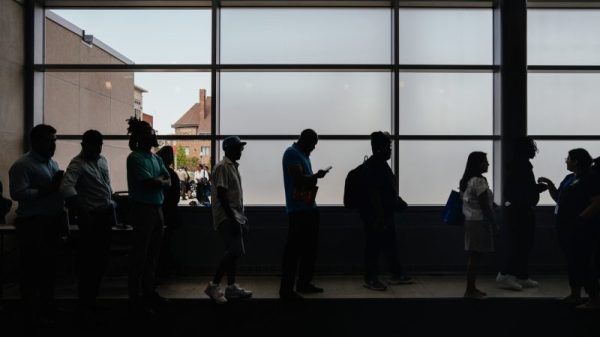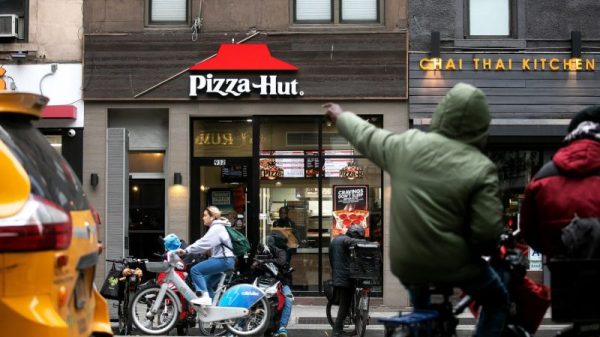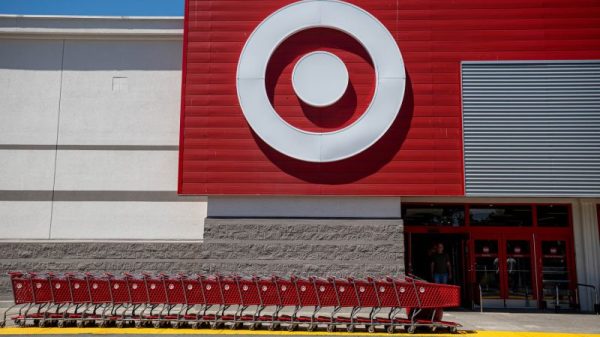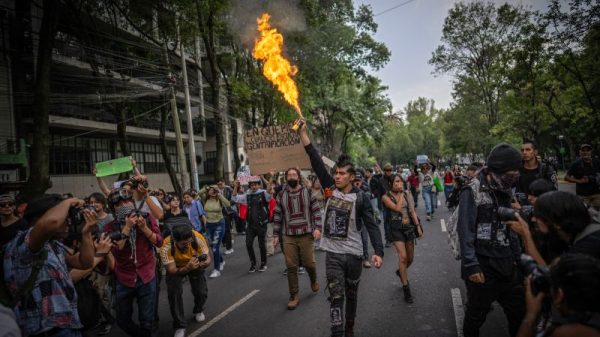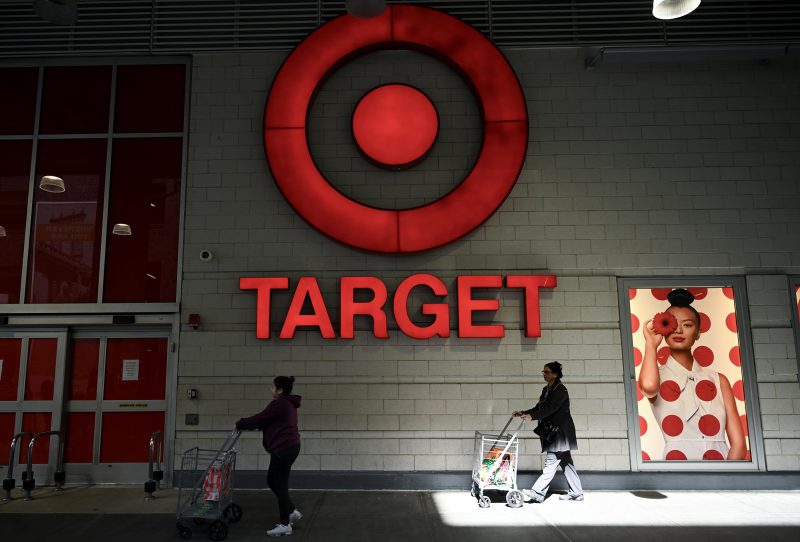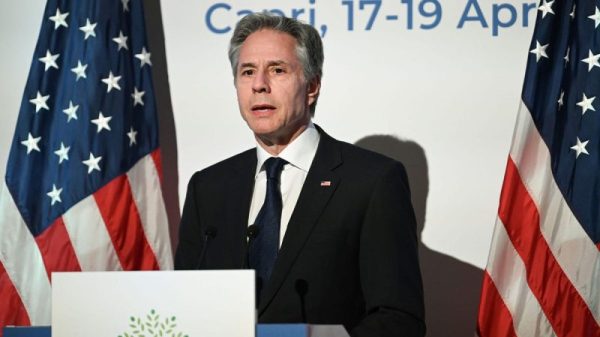On Sept. 26, Target set off a national firestorm when it said it would close nine stores in four states because theft and organized retail crime had made them too dangerous to run.
On its face, Target’s announcement was evidence that retail crime was preventing one of the country’s most prominent retailers from operating stores profitably and safely. It challenged skeptics who believed that retailers had exaggerated the impact of organized retail crime and used it as an excuse for poor financial performance.
There was just one problem with the explanation Target gave for closing stores: The locations it shuttered generally saw fewer reported crimes than others it chose to keep open nearby, a monthslong CNBC investigation has found.
CNBC’s findings cast doubt on Target’s explanation and raise questions about whether the company’s announcement was designed to advance its legislative agenda — seeking a crackdown on organized retail crime — and to obscure poor financial performance at the stores as it grapples with sliding sales.
In some cases, Target chose to keep operating stores in busier areas that had better foot traffic or higher median incomes, even though the locations saw more theft and violence, the probe revealed. In those areas, police departments may be better funded due to higher tax bases, and shoppers may have more to spend on discretionary goods.
Many of the locations Target closed were “small-format” stores the company opened over the last five years as part of an experiment to expand its footprint in dense, urban areas. The moves followed Target’s decision to shutter four similar stores in the spring that it said were underperforming, Retail Dive previously reported.
At the time it announced the nine store closures in September, Target said, “We cannot continue operating these stores because theft and organized retail crime are threatening the safety of our team and guests, and contributing to unsustainable business performance. We can only be successful if the working and shopping environment is safe for all.”
The news came just hours after the National Retail Federation issued a key annual retail security survey — in which it said violence at stores had increased but losses from theft hadn’t changed much — and exactly one month before the trade group was planning to lobby Congress for stiffer punishment for organized theft offenders. Target CEO Brian Cornell sits on the NRF’s board of directors and is a member of its executive committee.
One longtime retail executive and expert questioned whether Target’s claims about theft at the stores were designed to mask its struggles, as the retailer’s sales fell from the prior year in both its second and third quarters.
“I don’t want to use the word ‘stunt,’ because I don’t know exactly what went on in Minneapolis [where Target is based], but to me, it read like a stunt, looking to divert attention from the company’s lack of performance overall,” said Mark Cohen, a professor and director of retail studies at Columbia Business School who previously served as the CEO of Sears Canada, Bradlees and Lazarus department stores.
“They did not disclose their actual shortage statistics,” he added. “They talked about it in general terms; they did not disclose any other factors that would have caused them to decide to close any of those stores. They implied that the only reason they were closing the stores was because of theft. That may or may not be true. My guess is: Not true.”
In response, Target spokesperson Jim Joice told CNBC that as a growth company, Target is “continuously opening new stores, initiating remodels, investing in our team and infrastructure, and refining our operations as we seek to deliver the shopping experience that people have come to expect of Target.”
“In 2023 alone, we opened 21 new stores and remodeled 150 stores as part of our nearly $5 billion investment in strategic initiatives. The recently announced store closures related to safety, retail theft, and unsustainable business performance represent less than 0.5% of our U.S. footprint, with 1,956 stores currently operating and serving our guests,” Joice said.
CNBC used public record requests and law enforcement sources to obtain crime statistics and 911 call data for 21 Target stores in New York City, Seattle, the San Francisco Bay Area, and Portland, Oregon — the four areas where the retailer closed stores. The data includes the nine stores Target shuttered and similar locations it kept open nearby, spanning from January 2021 through September 2023, when the closures were announced. The records show how many times Target was listed as the victim of a crime at the locations, or how many times police were called to the stores and arrested someone, said they addressed the issue or generated a report or log of what occurred.
The records paint a startling picture of the frequent crime at the locations. But they also show a clear trend. Nearly every store the retailer closed saw less police activity and fewer reported crime incidents than the locations it kept open nearby.
Only one of the nine stores that Target closed across the four regions, a location in Pittsburg, California, saw more crime and police activity than its closest comparable location, in Antioch, California, according to CNBC’s analysis.
Store-specific crime data for the nine locations Target closed has not been previously reported.
Like most data on theft, organized retail crime, and “shrink,” or retailers’ inventory loss, the records obtained by CNBC are not complete. Theft and crime overall are difficult to measure, as they frequently go unreported and undetected, experts have told CNBC.
Target declined to provide its internal crime figures. Without those numbers, the records obtained by CNBC are “the only picture that you’re going to get” about what crime looked like at the locations the retailer closed and the ones it didn’t, said Christopher Herrmann, an assistant professor at John Jay College of Criminal Justice and an expert in crime analysis and mapping.
“It’s interesting that they’re using public safety, or employee safety, as an excuse, kind of, for closing the stores,” said Herrmann. “Because the reality is, they’re not closing the stores with the highest rate of retail theft.”
In response, Target’s Joice told CNBC that “store-level incidents vary widely in severity, and police data won’t show the full extent of what our teams experience on the ground.”
“We have repeatedly shared financial data and internal data on the increase of theft-related crime,” Joice said. “We have also consistently conveyed our emphasis on safety and highlighted team members’ experiences that demonstrate the impact that theft and organized retail crime have had on our company, our guests, and the communities we serve.”
“We continue to invest heavily in safety, including strategies to prevent and stop theft and organized retail crime in our stores, as well as partnering with law enforcement, legislators, and retail peers to seek long-term solutions,” Joice said.
Target closed three stores in the San Francisco Bay Area — one in San Francisco, one in Oakland and another in Pittsburg, a suburb about 40 miles outside the city.
All the locations were within a few miles or a short drive away from another Target that remained open, which could have played a role in the company’s decision to shutter them, experts said.
Retailers often “miscalculate how much the new store will cannibalize existing stores,” said Cohen, of Columbia Business School.
Target opened its now-closed small-format store in Oakland in 2019, just two miles away from its Emeryville location. Between January 2021 and September 2023, 96 crime incidents were reported at the Oakland store compared with 440 at the Emeryville store over the same time frame.
The findings reflect some overall theft trends in Oakland and Emeryville in 2023. Overall theft, excluding car theft, was down 15% in Oakland from Jan. 1 to Oct. 29, compared with the same period a year ago, according to police records. In Emeryville, petty theft and grand theft were up 16% and 14%, respectively, for the period from Jan. 1 to Oct. 31, compared with the same period a year ago, police records show.
Demographics is another factor that could be at play. In the ZIP code where the Oakland store is located, the median income level is $76,953, compared with $114,286 in Emeryville, according to U.S. Census Data.
People with higher incomes tend to have more money to spend on discretionary goods. Police departments in those areas may also be more inclined to enforce property crimes such as theft if there is less violent crime to attend to, which could explain the difference in police responses between stores, experts who study crime have told CNBC. For example, one homicide and three rapes have been reported in Emeryville so far this year. In comparison, 106 homicides and 159 rapes have been reported in Oakland in the same time frame.
Within the city of San Francisco, the small-format store on Folsom Street that Target closed saw at least 84 crime incidents that resulted in police reports between January 2021 and September 2023.
Two miles away at Target’s sprawling Union Square location, which remains open, 486 incidents were recorded during the same time frame.
The stores’ neighborhoods and the foot traffic they saw also differentiated them.
The closed store was sandwiched between a car dealership and a freeway in an area that locals said had light foot traffic and had attracted a homeless encampment during the Covid pandemic. In comparison, Target’s Union Square location is in the heart of San Francisco’s bustling tourist and shopping district.
Target closed three stores in the city of Portland that saw less crime than locations it kept open.
For example, the Target on Southeast Washington Street, which remains open, had 718 reported incidents between January 2021 and the end of September 2023, which is more than all three closed stores saw combined over the same time period, according to police records.
One of the locations, a small-format store on Northeast Halsey Street, was open for less than three years before it was closed.
Based on available data in Portland, CNBC’s findings echo some area crime statistics.
In the Hazelwood neighborhood, where Target’s store on Southeast Washington Street remains open, reported larcenies are up 5% in 2023 between Jan. 1 and the end of October, compared with the same period a year ago. In Hollywood and Richmond, where Target closed stores, reported larcenies were down 37% and 8%, respectively, for the same time period.
However, in downtown Portland, where Target’s store on Southwest Morrison Street was closed, reported larcenies were up 13% for that time period.
Target closed two stores in Seattle, both small-format locations that saw fewer crimes than the nearest Target stores.
For example, the shuttered Targets on Northwest Market Street and University Way Northeast had 235 and 395 reported incidents, respectively, between January 2021 and the end of September 2023. In comparison, two locations about five miles away that remain open, on Second Avenue and Northeast Northgate Way, saw 878 and 901 reported incidents, respectively, during the same time period.
In some cases, the data also matches local crime statistics. Between Jan. 1, 2021, and Oct. 31, 2023, reported larcenies were 30% lower in the area of Target’s Northwest Market Street location and 33% lower in the area of the University Way store, both of which were closed, than in the area where Target’s Northeast Northgate Way store remains open.
Target closed one store in New York City. The location was in East Harlem and housed within a larger shopping complex that borders the East River, about a 15-minute walk from the nearest subway station.
It recorded at least 844 incidents between January 2021 and the end of September 2023, but the figures pale in comparison with those during the same time period at other Target stores dotted across the Big Apple.
A store on Greenwich Street in Lower Manhattan saw 2,090 reported incidents, more than double the number in East Harlem in that time period. At another location, on Grand Street, 1,628 incidents were recorded.
The locations are vastly different. The two Lower Manhattan locations are in busier areas with more foot traffic and higher median income levels. In the ZIP code where the East Harlem store was located, the median income is $36,989, compared with more than $250,000 in the area around the Greenwich Street store and $43,362 in the area around the Grand Street location, U.S. Census data shows.
Target closed the East Harlem location — because of crime and safety, it said — at the same time it planned to open a store about a mile and a half away on West 125th Street in Harlem. Crime trends are worse in the area where the new store is opening, according to police records.
At the time Target announced the East Harlem closure, reported petty theft incidents were down 2.5% between Jan. 1 and Sept. 24, 2023, in the area where the East Harlem store was and up 9% during the same period in the area where the proposed store will be, compared with the same period a year ago. Target did not comment on the discrepancy.
Methodology: When analyzing 911 call logs and other crime data for this report, CNBC included in its tally only incidents that led to an arrest, police report or log, or incidents that police said they responded to and handled. Unfounded complaints, duplicate calls, requests for backup, and store and welfare checks were weeded out from the logs and not counted, along with other irrelevant information. Mental health crises, overdoses, vehicle thefts, vehicle burglaries and other events that weren’t directly related to Target or appeared to happen outside the confines of the store were also not included.
— Graphics by CNBC’s Gabriel Cortes
















